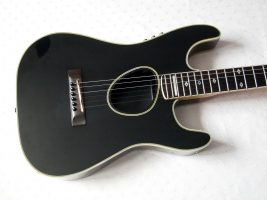

In 1982, Kramer switched to its classic beak headstock with a Kramer logo. Then, as with much of Kramer’s output, there is a litany of quirky variations across the years in the Pacer line.įor one, when the Pacer debuted, it came out under the Walker brand (Kramer’s original wooden-neck brand) sporting a Walker decal on its Fender Strat-style headstock. Early Pacers featured a vintage-style flicker tremolo, but these soon faded out making them rarer finds today. Originally, Kramer employed the Rockinger tremolo but switched over to the Floyd Rose before long. The other feature that made the Pacer stand out was its locking tremolo-a feature that Kramer embraced before any other mainstream guitar company. The Pacer was one of the first Strat-style guitars sold stock in multiple versions with a humbucker in the bridge position. One of the most visible and significant emblems of their approach was the wealth of non-traditional pickup combinations available for this series. The Pacer was Kramer’s signature take on that form, and its early flagship model that showcased Kramer’s forward-thinking design philosophy. Those headstock changes are key when deciphering how to date your Kramer.įrom the beginning, Kramer clearly embraced Super Strat culture. The most consistent and widely recognized changes centered around the headstock shapes as described below. So, basically, Kramer played around with every element of what goes into an electric guitar.

There was quite a bit of variation with the headstocks, neck shapes (C to Boat to Shredder), nut widths, tonewoods, pickups (Schaller to Seymour Duncan), electronics (stereo string panning, coil-splitting, hidden pickups), tremolos, and hardware. The company’s output declined in quality from 1986 to its shuttering in 1989.ĭuring that ‘81 to ‘86 run, Kramer was constantly updating designs. When players and collectors talk about Kramer at its peak as a guitar company, they’re talking about the production run from 1981 to 1986. Kramer’s later years imparted the brand with a lasting reputation for overbuilt guitars, but many players today are coming to realize how excellent those early Kramers were and still are. With the wholehearted endorsement of Eddie Van Halen - the foremost guitar hero of the 80s - Kramer rose to the top of the heap and enjoyed a reputation as the best guitar company around.īut much like the bands who played these guitars, succumbing to ‘80s excess would prove to be Kramer’s fatal flaw. Kramer kicked off the ‘80s switching from their USA-made aluminum necks to mostly Japanese-made wood necks, quickly establishing itself as the premier global guitar brand in terms of quality and sales. Sure, Kramers were all over hair metal videos and came in a variety of absolutely absurd finishes, but a great guitar is a great guitar and it’s likely only a matter of time before Kramer values skyrocket.


 0 kommentar(er)
0 kommentar(er)
